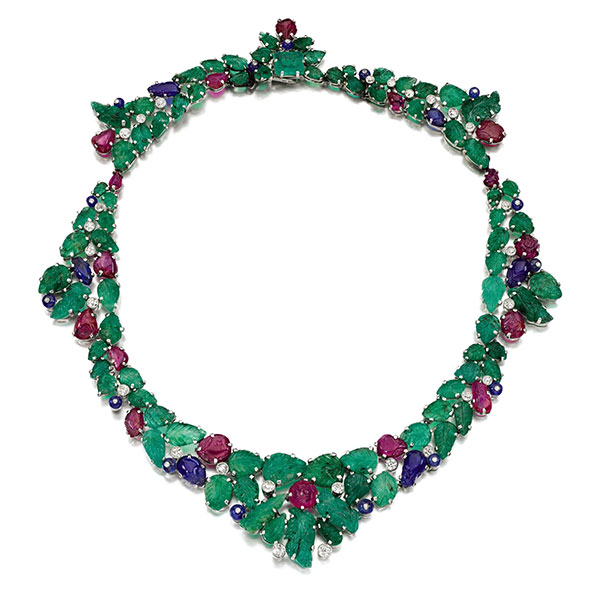
Publicity-wise, Britain’s current royal family has arguably had better months, but this Wednesday’s Family Collection of the Late Countess Mountbatten of Burma sale at Sotheby’s London directs our attention to what some consider a more hallowed era of the monarchy. The 56 lots that fall in the jewelry category will be uniquely appealing to collectors who prioritize provenance above all else, and collectively they present an exciting opportunity to acquire jewels that exchanged hands among top-shelf royal and royal-adjacent personalities.
Born in 1924, Patricia Edwina Victoria Mountbatten was the 2nd Countess Mountbatten of Burma, first cousin to Prince Philip (whose surname was Mountbatten before he married Queen Elizabeth II), daughter of Britain’s last viceroy of India, and great niece of Russia’s last tsarina. The jewelry items in the sale span multiple time periods and design movements, including several glamorous art deco diamond creations belonging to the countess’ mother, Edwina Ashley.
But a clear standout is a collection of memento mori belonging to Queen Victoria (Countess Mountbatten’s great-great-grandmother).
It was of course Queen Victoria who originally popularized the wearing of charms, trinkets, and all manner of symbolic bibelots, a practice that has drifted in and out of the jewelry trend file ever since.
Over the course of her long reign, Queen Victoria suffered many losses, spending decades mourning not only the death of her husband, Albert, but also of her mother and three of her children. During this time, she adorned herself in black crepe and wearable tributes to her loved ones. Victoria set the example for the ladies at court and was such an admired public figure that mourning jewelry soon became fashionable.
As for the mourning jewelry in the sale, what these precious heirlooms lack in scale and grandeur they more than make up for in sentimental value—first and foremost to the late queen, who commissioned or received them, but hopefully by proxy for the new owner. As specific as the pieces are, they are weirdly very chic and wearable in a modern-day context. Which kind of turns the frown upside down, if you will.
Here’s a closer look at the Queen Victoria jewels on offer and the stories baked into the provenance of each one.
The locket below was commissioned by Prince Albert as a mourning jewel on the death of the queen’s mother, Princess Victoria of Saxe-Coburg-Saalfeld, later Duchess of Kent.
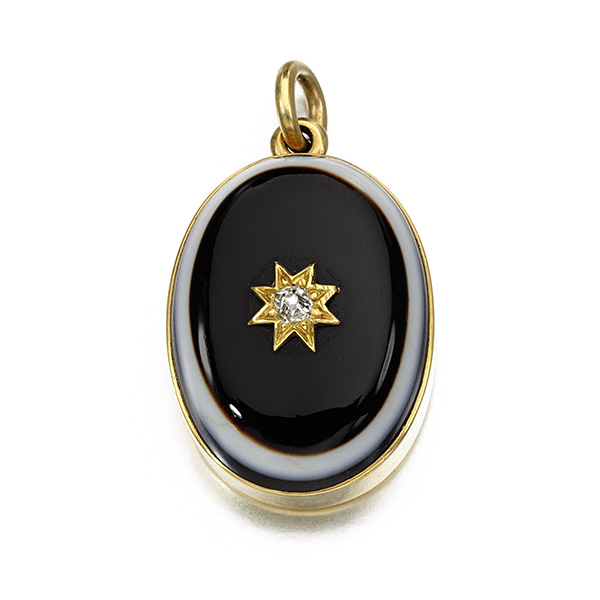
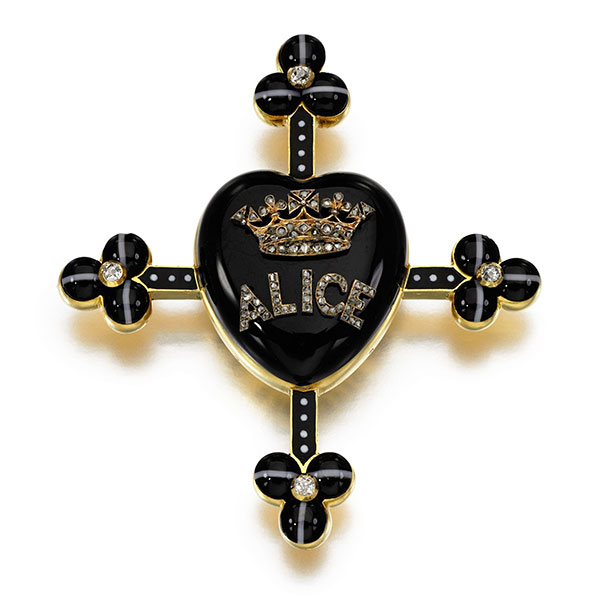
Commissioned by Queen Victoria, this pendant served as a mourning jewel on the death of her daughter Princess Alice and granddaughter Princess Marie of Hesse and by Rhine.
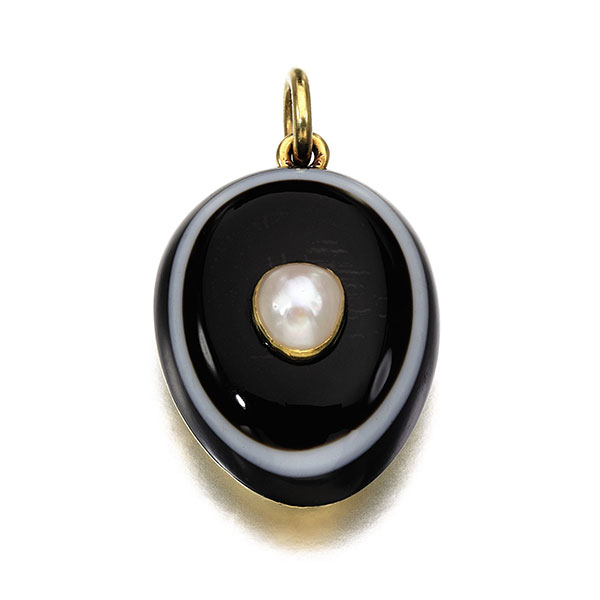
A button pin dating from 1879, possibly given by Queen Victoria to her youngest son, Prince Leopold, on his 26th birthday in remembrance of his late sister Princess Alice.
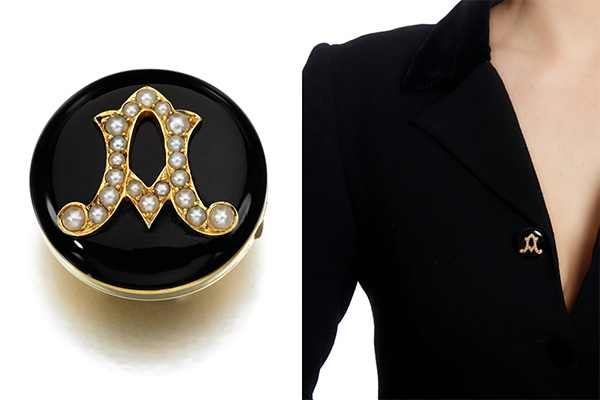
Top: No, this necklace did not belong to Queen Victoria, but it’s much brighter and livelier than the lugubrious mourning jewels, and too impressive not to show. Dating from the 1950s, it’s an articulated wreath of carved rubies, emeralds, and sapphires, accented by collet-set circular-cut diamonds and sapphire beads inset with single-cut diamonds. The Family Collection of the Late Countess Mountbatten of Burma sale is currently open for bidding; the live Sotheby’s London event will take place this Wednesday at 10 a.m. GMT.
Follow me on Instagram: @aelliott718
- Subscribe to the JCK News Daily
- Subscribe to the JCK Special Report
- Follow JCK on Instagram: @jckmagazine
- Follow JCK on X: @jckmagazine
- Follow JCK on Facebook: @jckmagazine






